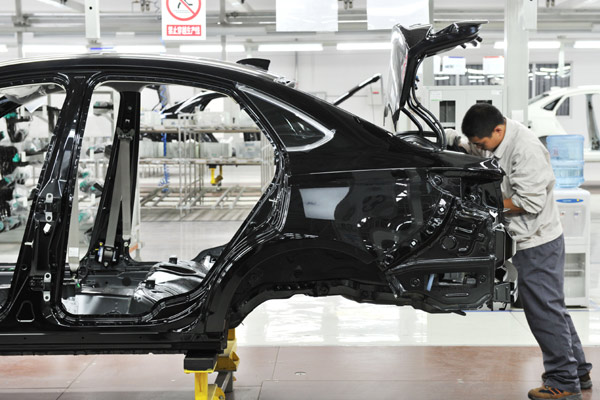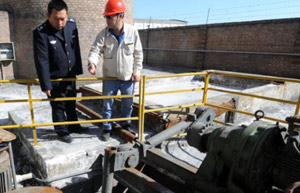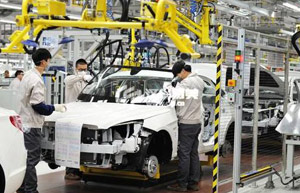|
 |
|
An employee working on the assembly line of BAIC Motor Corp Ltd in Beijing. The cities of Beijing, Tianjin and four surrounding provinces cut production by highly polluting industries to help keep the air clean during the APEC meeting, which ended on Tuesday in the Chinese capital city. [Photo / Provided to China Daily] |
Fixed-asset investment and trade affected; impact will show up in GDP data
Industrial output growth may come in at a six-year low this month because of restrictions on factories and construction to keep the air clean during the eight-day Asia-Pacific Economic Cooperation meeting, a leading financial institution said on Wednesday.
The impact of the APEC restrictions could be "significant" because six provinces and cities were involved, according to Beijing Gao Hua Securities Co Ltd, a financial services firm that has a partnership with Goldman Sachs Group Inc.
Gao Hua Securities said that November industrial production may increase about 6.9 percent year-on-year, on a par with the August figure, which was the lowest level since February 2009.
"As a result, we think the likelihood of further policy loosening has increased," said Song Yu and Maggie Wei, economists from the brokerage.
In the first 12 days of November, the cities of Beijing, Tianjin and four surrounding provinces cut production by highly polluting industries, especially the steel, cement and chemical sectors. Construction work at major sites was suspended as well.
Similar broad measures were taken for the 2008 Olympics in Beijing and 2014 Youth Olympics in Nanjing, Jiangsu province, which depressed industrial production growth.
The measures also likely curtailed fixed-asset investment, exports and imports, which will drag down overall economic growth, the brokerage said.
In the first nine months, industrial output increased 8.5 percent, compared with 9.6 percent in the same period last year, according to the National Bureau of Statistics. Fixed-asset investment rose 16.1 percent from January to September, compared with 20.2 percent last year.
Economists have also said that industrial production and fixed-asset investment were weak last month. Those figures are due for release by the NBS on Thursday.
Chang Jian, chief economist at Barclays Capital, estimated that industrial production growth slid to 7.9 percent in October from 8 percent in September, due to softening sequential momentum as implied by the manufacturing Purchasing Managers Index, which fell to 50.8 in October from 51.1 in September.
Fixed-asset investment growth may decelerate further given the property market correction and sluggish manufacturing investment, said Chang.
"We continue to believe that the ineffectiveness of targeted easing in lowering financing costs for the real economy, still-soft domestic demand and rising disinflationary risks are adding to the probability of benchmark interest rate cuts," she said.
Gao Hua Securities said that "the government will continue to favor relatively low-profile and targeted loosening".
Given the subdued level of consumer price inflation, which was 1.6 percent in October, the central bank may consider reserve requirement ratio and interest rate cuts, it said.
 |
 |
| Industrial output to see stable expansion in Q4 | China's industrial production grows 8.5% in first three quarters |
